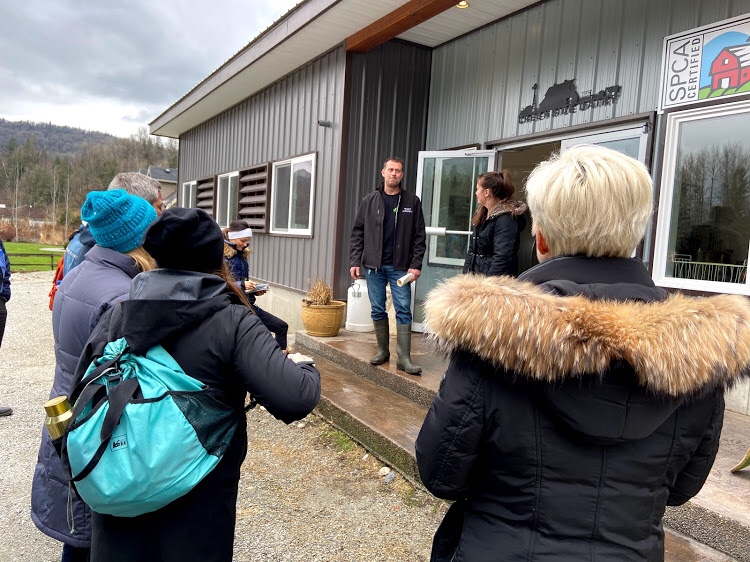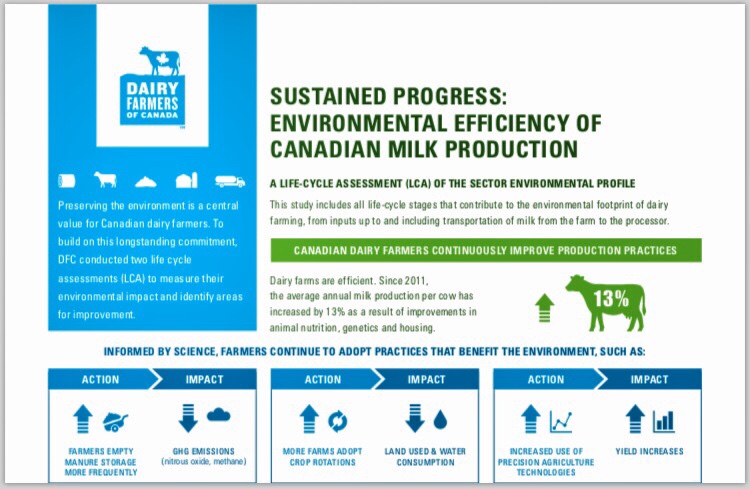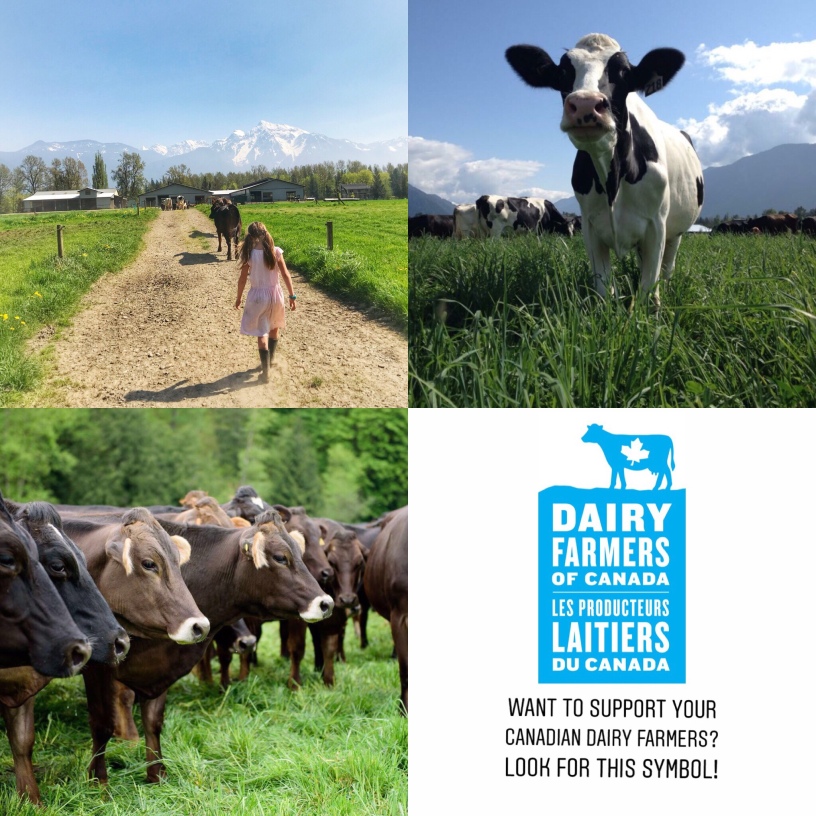Hello friends.
In just over two months, members of the Conservative Party of Canada will choose their new leader. By applying for a Conservative party membership by next Tuesday, March 28, you too can have a say in who becomes the next leader of the Official Opposition. Rona Ambrose has done a great job at the helm as interim leader but now it’s time to vote for the new long term voice and face of the party.
As dairy farmers, we’re watching this leadership competition unfold VERY closely. You see, all of the political parties in Canada have historically been supportive of the dairy and poultry industries’ current method of matching consumer demand with a supply of fresh milk, poultry, and eggs. Our system, called supply management, effectively protects our Canadian dairy sector’s vibrancy, viability, and important contributions to the Canadian economy while providing consumers with top-quality, safe, plentiful, and appropriately priced dairy products.
A few years ago, I shared the following description of our system in my first blog post about supply management: “In the 1960s and early 1970s, the Canadian government and Canadian dairy farmers came to the conclusion that production discipline – balancing supply and demand for milk products – was necessary to avoid extreme market fluctuations. Both the federal and provincial governments worked together with farmers to implement a system that is adjusted to suit the needs of Canadian demand for dairy. The system is administered by the Canadian Dairy Commission, which measures the demand for milk and sets the production limits accordingly. Plain white milk as well as any other dairy product labeled as Canadian is solely produced by Canadian dairy farmers for Canadian consumers. Milk is a local product, supporting local economies across our nation. The share of the market that each farm owns is called quota. Quota grants the farm a right to produce milk. The provincial quota is adjusted according to demand, and is increased or decreased as needed. Overproduction and waste are avoided because production is directly synchronized with consumer demand. Dairy farmers are paid a standard price for the milk they produce. This price is set by the Canadian Dairy Commission and is the result of a yearly national study of the cost of producing milk at the farm. Dairy farmers are paid the cost of producing the milk they ship to the processor.”
But with the prospect of a new leader for the party in official opposition to the governing Liberal Party of Canada, all of this could be in jeopardy. The two front runners in the race to become the new leader of the Conservative Party are no friends of supply management. In fact, one of the candidates, Maxime Bernier, has based nearly his entire platform on the premise that, if elected, he will do his utmost to dismantle this very system of stability, strength, and self-reliance that allows family farms across Canada to prosper. The other front runner, Kevin O’Leary, has oft times allowed his bias against supply management to show. Although he now professes that he supports supply management, he has also said that he will use supply management as a negotiation chip in any future trade deals. You can’t have it both ways, in my opinion!
The most infuriating part of all of this, however, are the half-truths and myths on which these candidates base their opinions. For example, they claim that consumers suffer as a result of supply management, claiming that Canadian consumers pay double the market rate for dairy products. Let’s take a look at that for a moment by comparing the prices in Canadian grocery stores to those south of us in the USA.

Compiled by Nielson, this graph is a weighted average over one entire year of milk sales in a select number of countries with which Nielson has contracts. It’s a very accurate picture because of the sheer size of the study, taking into account purchasing habits and the length of time studied.
Well, would you look at that!
To compare apples to apples, we must compare the price of “hormone free” milk in the US to Canadian milk, as all milk in Canada is artificial-growth-hormone free. I’m sorry, but do you see what I see? It appears that Canadian consumers pay LESS than our neighbours to the south! Huh! Who would have thought that this would be the case considering the rhetoric spewing from the anti-supply-management camps!
As further evidence to these facts, check out this comment from a friend of mine who recently visited Florida with her children. This is what she had to say:
“US $4 for a gallon of partly skimmed milk (3.79L, not 4L like up here in Canada) while I’m used to buying 4 L for $4.29 Canadian.”
Figure in the current exchange rate, and you’re paying over $6.65 for less milk. Interesting!
Mr. Bernier also claims that the price of milk in the stores would drop if supply management were abolished. Just take a look at the price of milk in New Zealand. They abolished supply management, but the retail price of milk is higher than in Canada AND farmers are paid much less. Just last year many farmers were forced to exit the industry when the farm gate price dropped far below the cost of producing their milk. Do we want to see our family run dairy farms disappear from our nation’s landscape? If Canada were to dismantle supply management, our family farms would be a thing of the past as large conglomerates would swoop in to take over those bucolic farms dotting our countryside from coast to coast.
Critics of supply management often say that our system stifles innovation. I’d beg to differ. Every year we take part in a tour of the newly built farms in our small part of the province. There usually are 10 farms on the tour, and the technology and innovation is staggering. Robotic milking equipment, robotic feeding equipment and the latest equipment in animal welfare advances, to name just a few. Family farms are able to invest in these sort of technological marvels just BECAUSE of the stability that supply management offers. Take a look at the graphic below. Canadian farm gate price for milk is stable, and sufficiently covers the cost of production, which allows for investment capital for these projects. This stability means that the banks are confident in our farms, and we are able to borrow the money to fund these innovative additions to our farms. Our farms are well maintained, in good repair, and feature the latest equipment and tools to provide the best care for our cows.

It should now be quite obvious to you that critics of supply management are basing their opinion of our system on faulty information. But these critics refuse to listen to the voices of Canada’s dairy farmers. We’re facing a very real, very immediate problem. If an anti-supply management candidate is elected in this leadership race, we could stand to lose much of our support in Ottawa if the voice of the official opposition does not hold the governing Liberals’ feet to the fire when or if our system comes under attack during trade negotiations and the like. And I shudder to think of what could happen should the Conservatives be re-elected in 2019 and either of these candidates would become Prime Minister. Not an ideal situation in the least!
Now that you understand the threats facing our family farms, would you be interested in helping to keep our system intact and benefiting both consumers and farmers? Here’s what you can do: Become a member of the Conservative Party of Canada by March 28, 2017. Membership is open to all citizens and permanent residents of Canada above 14 years of age, provided they are not a member of another political party. A one year membership is just $15 and allows you to vote in this coming leadership election to be held on May 27. We, along with our fellow Canadian dairy farmers will be watching the race with interest, and will in all likelihood be in communication with one another about which candidate we feel will best benefit all of Canada, dairy farmers included. Due to the way this vote will be structured, it will be important for all dairy farmers to vote as a block in order for our votes to be of any influence in the outcome. We have a few more weeks to decide who this candidate will be. I’m curious to hear from candidates, their staff, and other interested parties about who they think will be the best person to man the helm of the Conservative Party of Canada going forward.
Until next time,
Julaine, a Canadian dairy farmer.




















